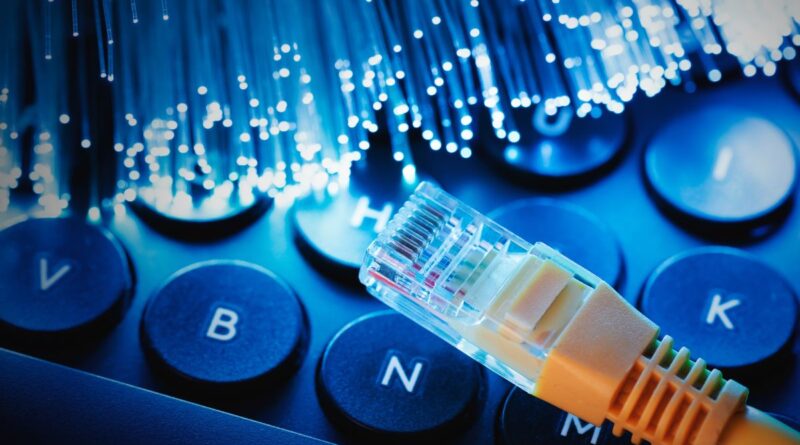Fiber optic is a revolutionary technology that transmits data using light signals through thin glass or plastic fibers. It’s like a super-fast highway for information, allowing us to browse the Internet, make phone calls, and stream videos at incredible speeds. If you’re curious about how this amazing technology works and why it’s becoming increasingly important in our daily lives, you’re in the right place. Let me take you through the fascinating world of fiber optics.
Spis treści:
What is Fiber Optic and How Does It Work?
At its core, fiber optic technology consists of extremely thin strands of glass or plastic, about the thickness of a human hair. These fibers carry light signals that contain digital information. The light bounces off the walls of the fiber using a principle called total internal reflection, allowing the signal to travel long distances without significant loss of quality. Each fiber contains two main parts: the core, where light travels, and the cladding, which reflects light back into the core. This simple yet ingenious design enables data transmission at speeds approaching the speed of light.
Advantages of Fiber Optic Technology
Fiber optic technology offers several significant benefits compared to traditional copper cables. First, it provides much faster data transmission speeds, potentially reaching up to 100 Gbps or more. Second, fiber optic cables can carry signals over much longer distances without degradation. They’re also immune to electromagnetic interference, which makes them ideal for use in environments with electrical equipment. Additionally, fiber optic cables are thinner and lighter than copper cables, making them easier to install and maintain. They also offer better security since it’s extremely difficult to tap into fiber optic cables without detection.
Common Applications
You’ll find fiber optic technology in numerous applications throughout modern life. The most obvious use is in telecommunications, where it forms the backbone of the Internet and phone networks. Healthcare professionals use fiber optics in medical imaging and minimally invasive surgeries. The technology also plays a crucial role in military and aerospace applications, providing secure and reliable communications. In our homes, fiber optic cables deliver high-speed internet and cable TV services. Even decorative lighting often uses fiber optics to create stunning visual displays.
Future Prospects
The future of fiber optic technology looks incredibly promising. Researchers continue to develop new ways to increase data transmission speeds and efficiency. We’re seeing innovations in quantum communications using fiber optics, which could revolutionize data security. The expansion of 5G networks relies heavily on fiber optic infrastructure. As our demand for faster, more reliable data transmission grows, fiber optic technology will become even more central to our digital lives. The development of new applications in fields like artificial intelligence and autonomous vehicles will further drive innovation in fiber optic technology.
Environmental Impact
One often overlooked aspect of fiber optic technology is its positive environmental impact. Fiber optic cables require less energy to transmit data compared to traditional copper cables, resulting in lower power consumption and reduced carbon emissions. They also have a longer lifespan and require less maintenance, which means fewer resources are needed for replacements and repairs. Additionally, the raw materials used in fiber optic cables (primarily silicon) are abundant and relatively eco-friendly to produce compared to copper mining and processing.
